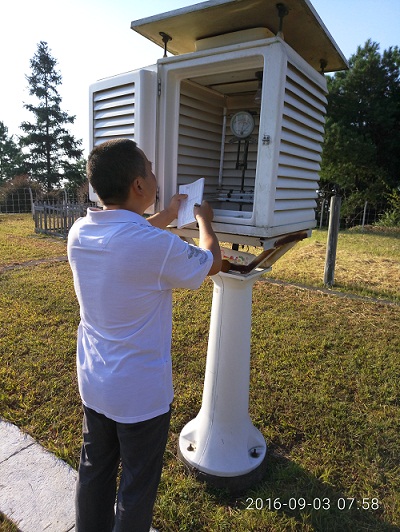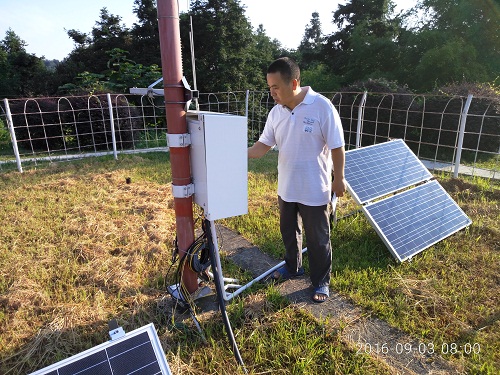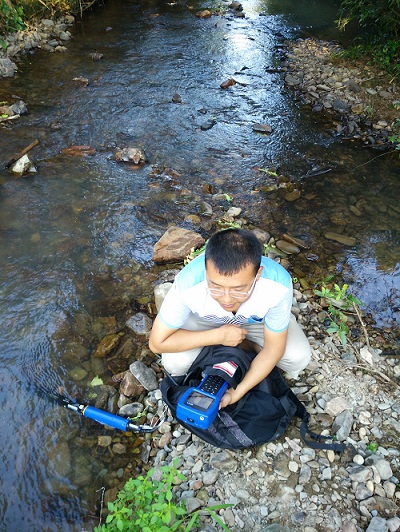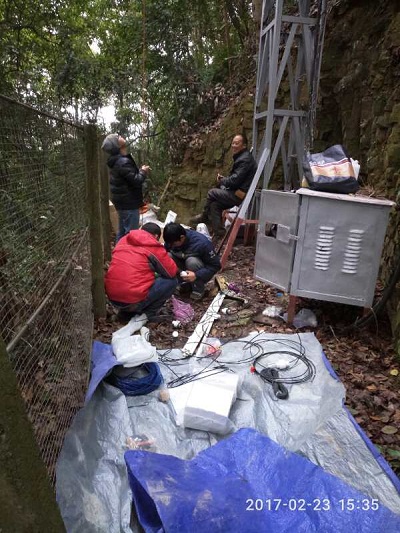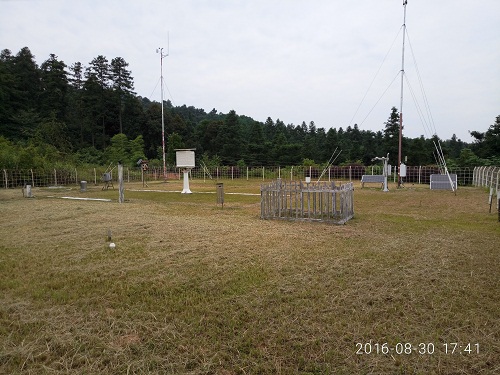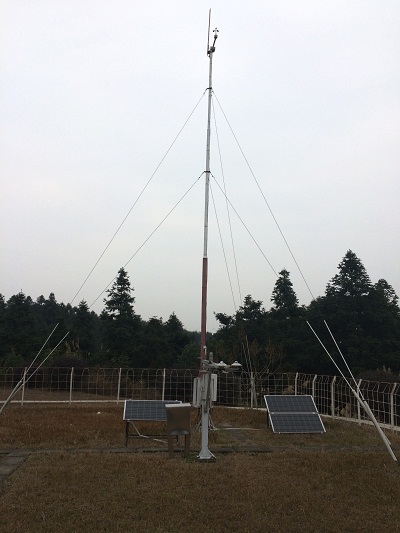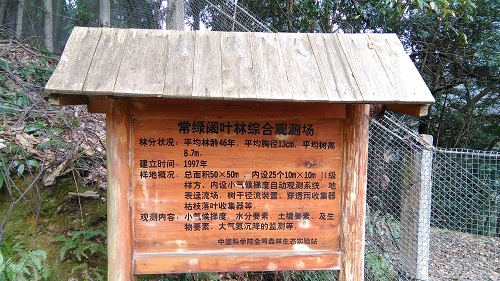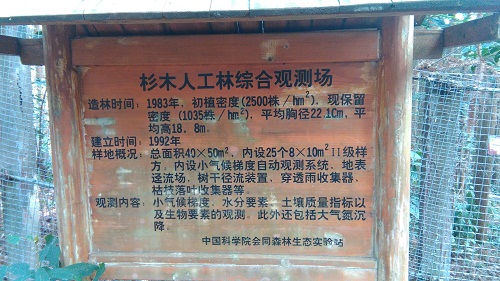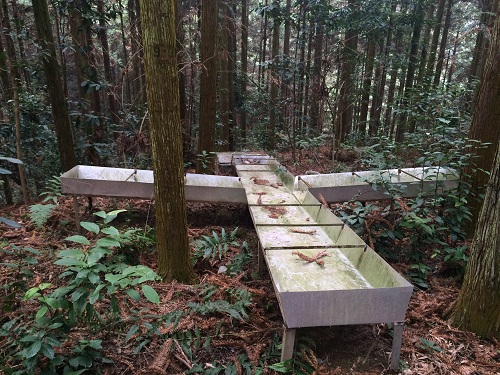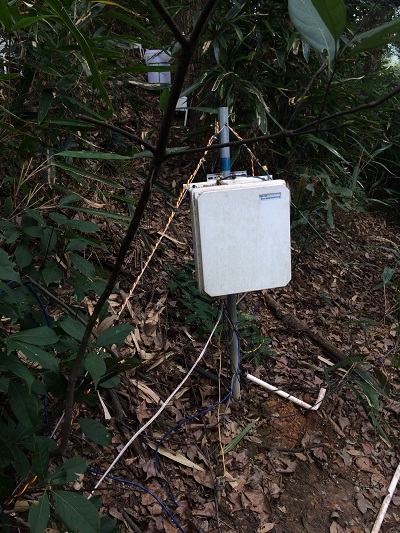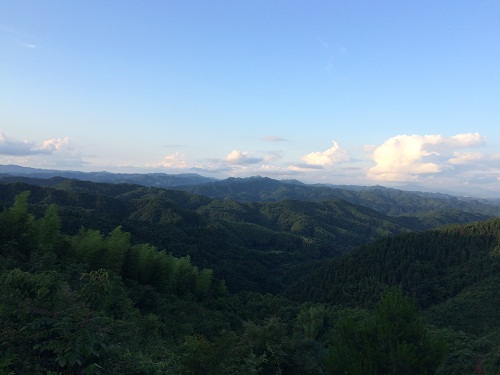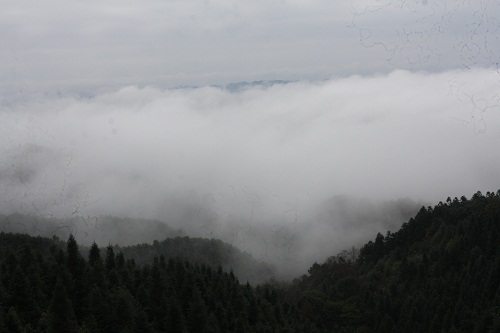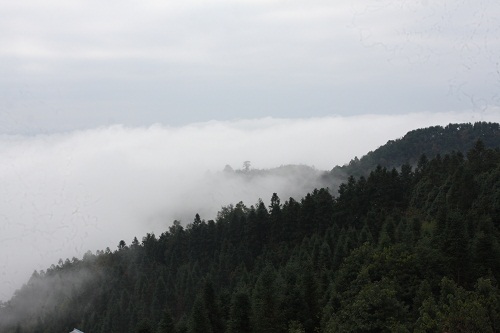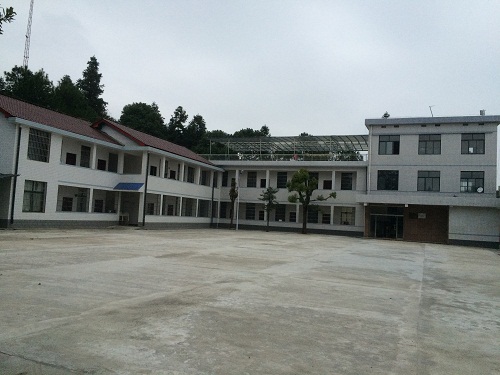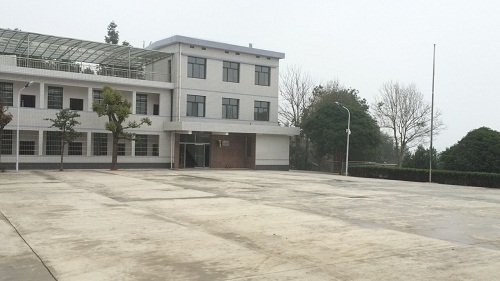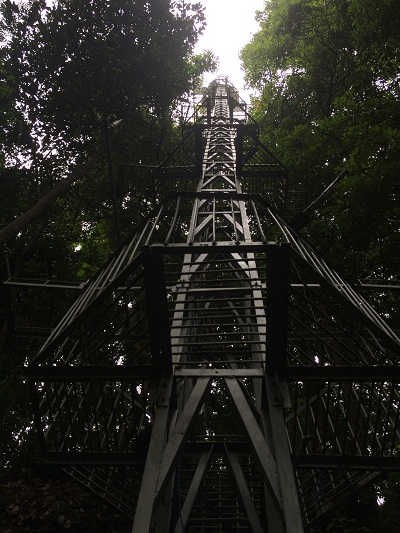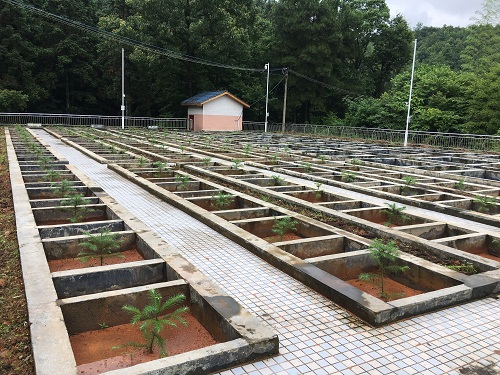Introduction
Huitong Experimental Station of Forest Ecology was founded in 1960, located in Huitong County, Hunan Province, 26°45′N and 109°30′E., and is affiliated with the Institute of Applied Ecology of the Chinese Academy of Sciences. In 1989 the station joined the Chinese Ecosystem Research Network (CERN). In 2005, the station has become a Huitong National Research Station of Forest Ecosystem.
Characteristics of the Region
This region marks a transition from Yun-Gui Plateau to the hills along the southern bank of Yangtze River and belongs to the up reach of Yuan River, a tributary of the Yangtze. The altitude ranges from 300 m to 1100 m above the sea level. The densely grouped hills and valleys feature the topography in this region, which determining forestry to be the major method of land use in this County. The mother rock mainly consists of grayish green slate, metamorphic rock and sandy shale. With relatively deeper layer, red earth or reddish yellow earth are generally distributed from 300m to 600m above sea level, and mountainous yellow earth above 600m. This region has a typical climate of Central Subtropical Zone, with average annual temperature of 16.5℃. The annual rainfall and annual evaporation range from 1200 to 1400mm and from 1100 to 1300mm, respectively, with average relative humidity of 83% and 300 days of frost-free period. The zonal vegetation is evergreen broad-leaved forest typical of subtropics, with the major species component of Castanopsis spp.and Lithocarpus spp. The region is also a major production area with rich water and heat resources favorable to the growth and development of
Cunninghamia lanceolata.
Orientation
We are carrying on a heritage of research begun in 1958 on ecology of Chinese fir plantation and native evergreen broad-leaved forest in subtropical areas. The research activity of the Station emphasize the long-term integrated localized and comparative studies of structure, function, primary ecological process of forest ecosystem, to create science and technology needed to sustain and enhance the subtropical timber plantation forest ecosystem, and to support restoration of native evergreen broad-leaved forest.
As we seek a better understanding of forest ecosystem ecology we will focus especially on:
1.Inter-species relations in mixed plantation forest and optimization of plantation forest;
2.Chemical ecology of plantation forest;
3.Root system ecology of forest;
4.Soil organic matter process of subtropical forest and management of soil ecology;
Academic Team
Currently there are eighteen permanent researchers and six guest researchers from disciplinary of forest ecology, forest soil, soil organism and soil microbiology and so forth. Included are seven senior professors including three supervisor of Ph.D. In addition, there are nine Ph.D. and M.S. students still working on their program.
Director of the Station: Dr. WANG SilongAchievements
Since it began in 1960 one of our station’s main activities has been long-term, integrated research on the structure, function and dynamics of C. lanceolata plantation. Some breakthroughs have been made in determining how the productivity of Chinese fir plantation forest changes on different temporal and spatial scales. Also discovered first in China were the degradation of soil fertility and a 30% decrease in the productivity of monoculture of C. lanceolata of the third rotation. In order to explain the mechanism of this degradation we initiated studies begun in 1960s to testify the nutritional hypotheses and toxicological hypothesis. It was in china we first started an integrated study on the ecological restoration effects of mixed plantation of C. lanceolata with broadleaved and clarified the mechanisms of interaction based on our studies on turnover of fine root and decomposition of mixed litter. Based on the studies on the soil of C. lanceolata plantation compared with zonal evergreen broad-leaved forest, we discovered that soil organic matter is the key regulating and controlling substance of soil fertility. During the period of the seventh and eighth “five year” plans, this station undertook a national key project to analyze the effects and damages of acid precipitation on the subtropical forest, and to develop effective countermeasures. Since 1979, the main achievements have won four prizes form Chinese Academy of Sciences and three from Hunan province all for Scientific and Technological Advancement. As a result of these achievements we have received economic and social benefits for the target regions, including expanded cooperation with local institutions.
To date research data on the structure, function and dynamics of main types of forest communities, along with observational data covering almost 50 years, have been accumulated and published in more than 300 papers, one collection of papers, 5 monograph and one supplement of Chinese Journal of Applied Ecology.
International Cooperation
Over the years our researchers have pursued extensive international cooperation and communication with other academic institutions in the fields of forest ecology, nutrient cycling, forest management, forest protection and allelopathy of plantation forest. Those we have worked with include colleagues from the University of California at Berkeley (USA), the Institute of Terrestrial Ecology (UK), the Swedish University of Agriculture, and the Austrian Academy of Forestry. Their help has been of great benefit not only in our research but also in training a new group of young academic leaders.
Research and Experimental Facilities
The station’s experimental forest covers an area of 100 hm2. In this experimental forest, field experimental facilities have been set up, including two observatory towers for microclimate gradients, two observatory sites on hydrological budget and three more on runoff, and 48 cement pools of different sizes for analysis of nutrient requirement and balance. Another 950 m2 of building provides space for labs equipped with instruments, including inorganic analysis, organic chemistry, plant physiological ecology, soil organism and microorganism lab.
Working and Living Facilities
The station has an area of 4000 m2 of working and living space, including office rooms equipped with computers, copy machine and fax machine, well remodelled guest rooms, a dining room, and entertaining room and reading room. We can accommodate a total of 100 research scientists facilitating workshops and training classes.
Station head: Dr. Wang Silong
Station address:
Guangping Town, Huitong County,
Hunan Province, 418307 China
Tel: 86-745-8702490
Mailing address:
Institute of Applied Ecology,
Chinese Academy of Sciences,
P.O. Box 417
72 Wenhua Rd.
Shenyang, 110016 China
Tel: 86-24-83970344
E-mail: slwang@iae.ac.cn
http://htf.ac.cn
Publication
Chen Longchi*, Wang Silong*, Wang Qingkui. 2016. Ecosystem carbon stocks in a forest chronosequence in Hunan Province, South China. Plant and Soil, doi:10.1007/s11104-016-2950-x
Chen Longchi, Wang Silong, and Yu Xiaojun. 2005. Effects of phenolics on seedling growth and 15N nitrate absorption of Cunninghamia lanceolata. Allelopathy Journal. 15: 57-66
Chi YG, Xu M, Shen RC, Yang QP, Huang BR, Wan SQ. Acclimation of Foliar Respiration and Photosynthesis in Response to Experimental Warming in a Temperate Steppe in Northern China. PLoS ONE. 2013, 8(2): e56482. doi:10.1371/journal.pone.0056482
He Tongxin, Wang Qinkui*, Wang Silong, Zhang Fangyue. 2016. Nitrogen addition altered the effect of belowground C allocation on soil respiration in a Subtropical Forest. PLoS ONE 11(5): e0155881. doi:10.1371/journal. pone.0155881.
Jiaojun, Zhu, Deliang Lu, Weidong Zhang, 2014. Effects of gaps on regeneration of woody plant: a meta-analysis. Journal of Forestry Research, 25(3): 501-510.
Kong Chuihua, Chen Longchi, Xu Xiaohua, Wang Peng, and Wang Silong. 2008. Allelochemicals and activities in a replanted Chinese fir (Cunninghamia lanceolata (Lamb.) Hook) tree ecosystem. Journal of Agricultural and Food Chemistry. 56: 11734-11739.
Li RS, Yang QP*, Zhang WD, Zheng WH, Chi YG, Xu M, Fang YT, Gessler A, Li MH, Wang SL*. Thinning effect on photosynthesis depends on needle ages in a Chinese fir (Cunninghamia lanceolata) plantation. Science of the Total Environment, 2017, 580, 900–906.
Li RS, Yang QP*, Zhang WD, Zheng WH, Chi YG, Xu M, Fang YT, Gessler A, Li MH, Wang SL*. Thinning effect on photosynthesis depends on needle ages in a Chinese fir (Cunninghamia lanceolata) plantation. Science of the Total Environment, 2017, 580, 900–906.
Li Weibin, Jin Changjie, Guan Dexin, Wang Qingkui, Wang Anzhi, Yuan Fenghui, Wu Jiabing. 2015. The effects of simulated nitrogen deposition on plant root traits: A meta-analysis. Soil Biology & Biochemistry 82,112-118.
Liu Yanxin, Wang Silong*, Wang Qingkui, Zhang Jian. 2010. Effects of mixed-species leaf litter on litter decomposition and soil microbial communities in experimental subtropical plantation forest. Journal of Food, Agriculture & Environment 8, 1102–1108.
Longchi Chen, Hua Wang, Xin Yu, Weidong Zhang, Xiaotao Lv, Silong Wang, 2017. Recovery time of soil carbon pools of coversional Chinese fir plantations from broadleaved forests in subtropical regions, China. Science of the Total Environment, DOI: 10.1016/j.scitotenv.2017.02.140.
Shaokui Yan, A.N. Singh, Shenglei Fu, Chonghui Liao, SilongWang,Yuanliang Li , Yang Cui,Lile Hu.A soil fauna index for assessing soil quality.Soil Biology & Biochemistry 47 (2012) 158-165
Silong Wang, Weidong Zhang& Felipe Sanchez. Relating net primary productivity to soil organic matter decomposition rates in pure and mixed Chinese fir plantations. Plant Soil, 2010, 334: 501-510.
Sun Tao, Dong Lili, Zhang Lili, Wu Zhijie, Wang Qingkui, et al. 2016. Early stage fine-root decomposition and its relationship with root order and soil depth in a Larix gmelinii plantation. Forests.
Wang Qingku*, Zhong Micai, Wang Silong. 2013. Home-field advantage of litter decomposition and nitrogen release in forest ecosystems. Biology & Fertility of Soils 49, 427-434.
Wang Qingkui*, Fuming Xiao, Tongxin He, Wang Silong. 2013. Responses of labile soil organic carbon and enzyme activity in mineral soils to forest conversion in the subtropics. Annals of Forest Science 70:579–587.
Wang Qingkui*, Fuming Xiao, Zhang Fangyue, Wang Silong. 2013. Labile soil organic carbon and microbial activity in three subtropical plantations. Forestry 86, 569–574.
Wang Qingkui*, He Tongxin, Liu Jing. 2016. Litter input decreased the response of soil organic matter decomposition to warming in two subtropical forest soils. Scientific Reports 6, 33814; doi: 10.1038/srep33814.
Wang Qingkui*, Tongxin He, Wang Silong, Liu Li. 2013. Carbon input manipulation affects soil respiration and microbial community composition in a subtropical coniferous forest. Agricultural and Forest Meteorology 178-179, 152–160.
Wang Qingkui*, Wang Silong, Tongxin He, Liu Li, Wu Jiabing. 2014. Response of organic carbon mineralization and microbial community to leaf litter and nutrient additions in subtropical forest soils. Soil Biology & Biochemistry 71, 13-20.
Wang Qingkui*, Wang Silong, Zhong Micai. 2013. Ecosystem carbon storage and soil organic carbon stability in pure and mixed stands of Cunninghamia lanceolata and Michelia macclurei. Plant and Soil, 370:295–304.
Wang Qingkui*, Wang Yanping, Wang Silong, Tongxin He, Liu Li. 2014. Fresh carbon and nitrogen inputs alter organic carbon mineralization and microbial community in forest deep soil layers. Soil Biology & Biochemistry 72, 145-151.
Wang Qingkui*, Xiao Fuming, Wang Silong, Xu Guangbiao. 2012. Response of selected soil biological properties to stump presence and age in a managed subtropical forest ecosystem. Applied Soil Ecology 57, 59–64.
Wang Qingkui*, Zeng Zhangquan, Zhong Mcai. 2016. Soil moisture alters the response of soil organic carbon mineralization to litter addition. Ecosystems, 19(3), 450-460.
Wang Qingkui*, Zhang Weidong, Sun Tao, et al. 2017. N and P fertilization reduced soil autotrophic and heterotrophic respiration in a young Cunninghamia lanceolata forest. Agricultural and Forest Meteorology 232, 66–73.
Wang Qingkui*, Zhang Weidong, Sun Tao, et al. 2017. N and P fertilization reduced soil autotrophic and heterotrophic respiration in a young Cunninghamia lanceolata forest. Agricultural and Forest Meteorology 232, 66–73.
Wang Qingkui*, Zhong Micai, Wang Silong. 2012. A meta-analysis on the response of microbial biomass, dissolved organic matter, respiration, and N mineralization in mineral soil to fire in forest ecosystems. Forest Ecology and Management 271, 91–97.
Wang Qingkui*, Zhong Micai. 2016. Composition and mineralization of soil organic carbon pools in four single-tree species forest soils. Journal of Forestry Research, 27(6), 1277-1285.
Wang Qingkui, Liu Suping, Wang Silong*. 2013. Debris manipulation alters soil CO2 efflux in a subtropical plantation forest. Geoderma 193, 316-322.
Wang Qingkui, Wang Silong*, Deng Shijian. 2005. Comparative study on active soil organic matter in Chinese fir plantation and Native broad-leaved forest in subtropical China. Journal of Forestry Research 16, 23–26.
Wang Qingkui, Wang Silong*, Fan Bing, Yu Xiaojun. 2007. Litter production, leaf litter decomposition and nutrient return in Cunninghamia lanceolata plantations in south China: effect of planting conifers with broadleaved species. Plant and Soil 297, 201–211.
Wang Qingkui, Wang Silong*, Huang Yu. 2008. Comparisons of litterfall, litter decomposition and nutrient return in a monoculture Cunninghamia lanceolata and a mixed stand in southern China. Forest Ecology and Management 255, 1210–1218.
Wang Qingkui, Wang Silong*, Huang Yu. 2009. Leaf litter decomposition in the pure and mixed plantations of Cunninghamia lanceolata and Michelia macclurei. Biology & Fertility of Soils 45, 371–377.
Wang Qingkui, Wang Silong*, Liu Yanxin. 2008. Responses to N and P fertilization in a young Eucalyptus dunnii plantation: microbial properties, enzyme activities and dissolved organic matter. Applied Soil Ecology 40, 484–490.
Wang Qingkui, Wang Silong*, Xu Guangbiao, Fan Bing. 2010. Conversion of secondary broadleaved forest into Chinese fir plantation alters litter production and potential nutrient returns. Plant Ecology 209, 269-278.
Wang Qingkui, Wang Silong*, Yu Xiaojun. 2011. Decline of soil fertility during forest conversion of secondary forest to Chinese fir plantations in subtropical China. Land Degradation and Development 22, 444–452.
Wang Qingkui, Wang Silong*, Zhang Jian. 2009. Assessing the effects of vegetation types on carbon storage fifteen years after reforestation on a Chinese fir site. Forest Ecology and Management 258, 1437–1441.
Wang Qingkui, Wang Silong*. 2006. Microbial biomass in subtropical forest soils: effect of conversion of natural secondary broad-leaved forest to Cunninghamia lanceolata plantation. Journal of Forestry Research 17, 197–200.
Wang Qingkui, Wang Silong*. 2007. Soil organic matter under different forest types in Southern China. Geoderma 142, 349–356.
Wang Qingkui, Wang Silong*. 2008. Soil microbial properties and nutrients in pure and mixed Chinese fir plantations. Journal of Forestry Research 19, 131–135.
Wang Qingkui, Wang Silong*. 2011. Response of labile soil organic matter to changes in forest vegetation in subtropical regions. Applied Soil Ecology 47, 210–216.
Wang Yanping*, Li Chuanrong, Wang Qingkui, et al. 2016. Environmental behaviors of phenolic acids dominated their rhizodeposition in boreal poplar plantation forest soils. Journal of Soils and Sediments 16, 1858–1870.
Weidong Zhang, Lin Chao, Qingpeng Yang, Qingkui Wang, Yunting Fang, Silong Wang, 2016. Litter quality mediated nitrogen effect on plant litter decomposition regardless of soil fauna presence. Ecology, 97(10): 2834-2843.
Weidong Zhang, Shufen Yuan, Ning Hu, Yilai Lou, Silong Wang, 2015. Prediction soil fauna effect on plant litter decomposition by using boosted regression trees. Soil Biology & Biochemistry, 82: 81-86.
Weidong Zhang, Silong Wang. Effects of NH4+ and NO3- on litter and soil organic carbon decomposition in a Chinese fir plantation forest in South China. Soil Biology & Biochemistry, 2012, 47: 116-122.
Weidong Zhang, Xiaofeng Wang, Silong Wang, 2013. Addition of external organic carbon and native soil organic carbon decomposition: a Meta-analysis. PLoS ONE, DOI: 10.1371/journal.pone.0054779.
Weidong Zhang, Xiaofeng Wang, Silong Wang, 2014. Fate of Chinese fir litter during decomposition as a result of inorganic N addition. Applied Soil Ecology, 74: 30-36.
Xia Zongwei, Bai Edith*, Wang Qingkui, et al. 2016. Biogeographic distribution patterns of bacteria in typical Chinese forest soils. Front. Microbiol. 7:1106.doi: 10.3389/fmicb.2016.01106.Yang QP, Liu LL, Zhang WD, Xu M, Wang SL. Different responses of stem and soil CO2 efflux to pruning in a Chinese ?r (Cunninghamia lanceolata) plantation. Trees, 2015, 29: 1207-1218.
Yang QP, Liu LL, Zhang WD, Xu M, Wang SL. Different responses of stem and soil CO2 efflux to pruning in a Chinese ?r (Cunninghamia lanceolata) plantation. Trees, 2015, 29: 1207-1218.
Yang QP, Xu M, Chi YG, Zheng YP, Shen RC, Li PX, Dai HT. Temporal and spatial variations of stem CO2 efflux of three species in subtropical China. Journal of Plant Ecology. 2012, 5( 2): 229-237.
Yang QP, Xu M, Chi YG, Zheng YP, Shen RC, Wang SL. Effects of freeze damage on litter production, quality and decomposition in a loblolly pine forest in central China. Plant and Soil. 2014, 374:449–458.
Yang QP, Xu M, Chi YG, Zheng YP. Relationship between stem CO2 efflux and stem temperature at different measuring depths in Pinus massoniana trees. Acta Ecologica Sinica , 2016, 36: 229–235.
Yang QP, Zhang WD, Renshan Li, Xu M, Wang SL. Different responses of non-structural carbohydrates in above-ground tissues/organs and root to extreme drought and re-watering in Chinese fir (Cunninghamia lanceolata) saplings. Trees, 2016, 30:1863–1871
Yang QP, Zhang WD, Renshan Li, Xu M, Wang SL. Different responses of non-structural carbohydrates in above-ground tissues/organs and root to extreme drought and re-watering in Chinese fir (Cunninghamia lanceolata) saplings. Trees, 2016, 30:1863–1871
Youzhi Han, Jianwei Zhang, Kim G. Mattson, Weidong Zhang, Thomas A. Weber, 2016. Sample sizes to control error estimates in determing soil bulk density in California forest soils. Soil Sci. Soc. Am. J., 80: 756-764.
Zhang Jian, Wang Silong*, Feng Zongwei, Wang Qingkui. 2009. Carbon mineralization of soils from native evergreen broadleaf forest and three plantations in mid-subtropic China. Communications in Soil Science and Plant Analysis. 40, 1964–1982.
Zhang Jian, Wang Silong*, Feng Zongwei, Wang Qingkui. 2009. Stability of soil organic carbon changes in successive rotations of Chinese fir (Cunninghamia lanceolata (Lamb.) Hook) plantations. Journal of Environmental Sciences 21, 352–359.
Zhang WD, Chao L, Yang QP, Wang QK, Fang YT, Wang SL. Litter quality mediated nitrogen effect on plant litter decomposition regardless of soil fauna presence. Ecology, 2016, 97(10): 2834-2843.
Zhang Weidong*, Chao Lin, Yang Qingpeng, Wang Qingkui, et al. 2016. Litter quality mediated nitrogen effect on plant litter decomposition regardless of soil fauna presence. Ecology, 97(10), 2834-2843.
Zheng YP, Yang QP, Xu M, Chi YG, Shen RC, Li PX, Dai HT. Responses of Pinus massoniana and Pinus taeda to freezing in temperate forests in central China. Scandinavian Journal of Forest Research, 2012, 27:520-531.
